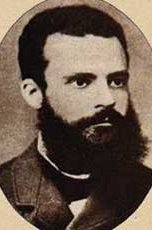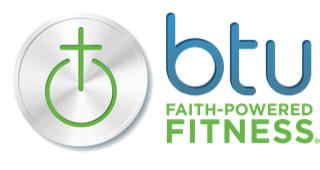 You know who that handsome devil is to the left? Why that’s Vilfredo Pareto. What? You’ve never heard of him? Okay, I hadn’t either. But I was very familiar with the rule named after him, The Pareto Principle (also known as the 80-20 rule, the law of the vital few, and the principle of factor sparsity). The Pareto Principle states that, for many events, roughly 80% of the effects come from 20% of the causes. Or put simply, 20% of the work gets 80% of the results.
You know who that handsome devil is to the left? Why that’s Vilfredo Pareto. What? You’ve never heard of him? Okay, I hadn’t either. But I was very familiar with the rule named after him, The Pareto Principle (also known as the 80-20 rule, the law of the vital few, and the principle of factor sparsity). The Pareto Principle states that, for many events, roughly 80% of the effects come from 20% of the causes. Or put simply, 20% of the work gets 80% of the results.
I believe this principle is perfectly exemplified in health and fitness. For instance, losing fat is often a matter of cutting calories or reducing carbohydrates or making a relatively small dietary change and sticking with it. In fact, I know (and have heard of people) who simply reduce their carbohydrates to under 30 grams a day and have fantastic weight loss results. No exercise. No calorie counting. No crazy grapefruit-chia-fish-oil cleanse. Cutting carbs, a small change that amounts to roughly 20% extra effort in my opinion, makes a big difference. Will it get you 6% body fat? Maybe, maybe not. But it could be a good place to start.
How about with exercise? Say you want to be generally strong all over. You could focus on these five exercise movements: push-ups (or bench press), pull-ups, sit-ups, squats, and military press. These are each compound movements, meaning that they incorporate more than one muscle. When you do push-ups, you are using your chest (pectorals) primarily, and the back of your upper arms (triceps) secondarily. Pull-ups will use your back muscles (latissimus dorsi… or lats for short) and the front of your upper arms (biceps) secondarily. Each of these exercises includes multiple muscle groups and by focusing on these sort of movements, you’ll get pretty good results… around 80%.
However, if you want really big biceps, you’ll need much more than just pull-ups. And this is where that extra 80% of the work comes in. As they say, the devil is in the details. Yes, you can make decent, overall improvements with 20% of the work. And if you’re happy with the 80% results you do get, then so am I. But not everyone is. That’s where you have to decide what you’re willing to do to get from where you are to where you’d like to be.
And keep in mind, I’m not suggesting that the remaining 80% of the work is through exercise. In fact, more often than not, it won’t be additional exercise that’s going to take the extra time and effort. It will be the meal planning and prep, the grocery shopping, the research, learning how to exercise smarter, asking the right questions, increasing knowledge about health and nutrition, and so on.
There are tools that can help shorten that extra 80% if you’re looking to get that extra 20% in results. The meal replacement drink Shakeology is quite valuable. It does a lot of the extra work for you by packing so many nutritional benefits in each shake, eliminating some of the need for extra grocery shopping and meal preparation. The same goes with a program like P90X (those who would argue it should be shorter should check out P90X2). It covers the whole body in many different ways in a little over an hour a day. These are awesome tools for reducing that extra 80% of work because they’ve done much of the homework for you.
Regardless of whether you’re going to use some of these tools or not, just be aware of them. Be intentional in deciding your goals and be realistic about the expected outcome. If you’re wanting overall better health, some increased strength, and maybe some fat-loss, you’ll likely be able to accomplish that with a 20% increase in effort. However, if you’re wanting a magazine-cover physique, you’re going to have to put in more than 20%. The good news is that I’m here to help you with whichever goal you decide.
Don’t misunderstand my intent! I’m not encouraging you to do the least you can do to get results. I’m just wanting you to get the biggest bang for your buck… the most results for your effort. Yes, “work” is subjective and on a sliding-scale depending on who you ask, as are results a lot of times (how you look, how clothes fit, etc.). But knowing what you want and really learning how to get there will cut down on the time it takes and the potential frustration of obstacles in the way.
I couldn’t tell you what kind of shape Pareto was in. Judging from his impressive yet rather unkempt beard, I’m guessing he himself practiced the principle that would someday be named after him. Letting the beard grow was the easiest part and made the biggest difference. Keeping it manicured, on the other hand, is a different story.
So what about you? What will you do? What are your goals? It bears repeating: be intentional and be realistic. Don’t just go through the motions. Outline a plan. Make it happen.


